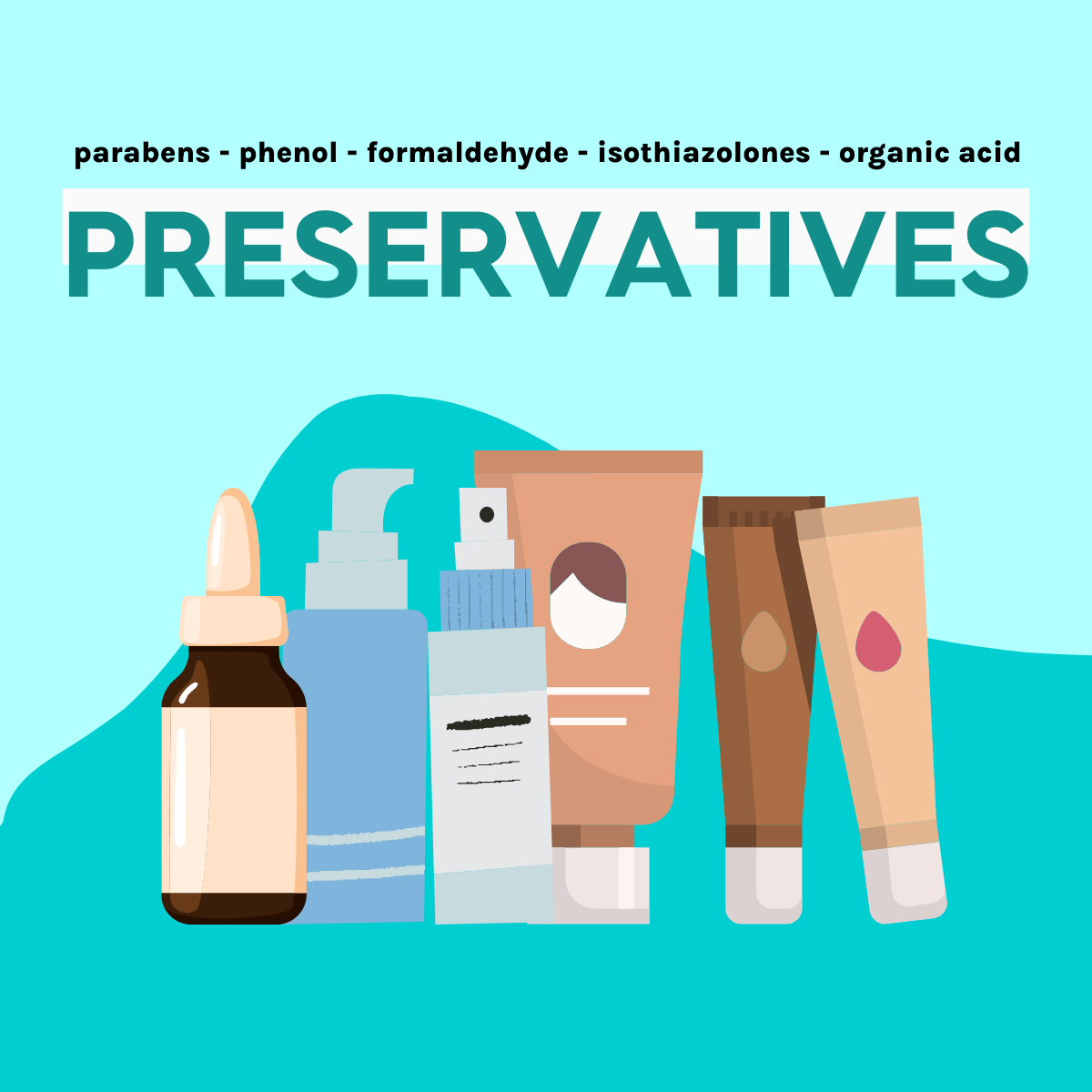In the last article, we uncovered the truth behind the practice of preservatives in cosmetics. We talked about the main reason they are used in skincare, what they do to harmful microbes and if they are completely safe to your skin. This time around, we will be doing something a little different and venture deeper into the science beneath all of the common preservatives used in your favourite products.
Preservatives acts as the magician that changes a cell’s structure, which inadvertently destroys it and all its functions. This is the main reason why they are so effective in killing unwanted microorganisms such as microbes so that a product will have a longer shelf life. However, everything good always comes with a price.

It is quite known that preservatives can potentially be irritating to the skin because while they love to demolish other cells, they often could not differentiate between good cells and bad microbes. Hence, professional mixing of preservatives in formulations is really crucial in order to ensure that they will not cause discomfort to one’s skin.
We have mentioned multiple times the importance of going for reputable brands with experienced cosmetic chemists when buying any type of products. Why? Because these brands possess their own quality control team that checks and makes sure that their formulations are safe and gentle for consumers’ use. So you won’t only get a product that brings out real game-changing results, you will also not suffer from any side effects that may cause serious issues to your skin.
How Cosmetic Formulators Choose the Preservative System
When deciding which preservatives should be used in a formula, cosmetic chemists often consider these 4 ultimate factors:
- Effectiveness – This is done according on years and years of countless research to find out which preservatives are the most effective.
- Compatibility with Formulas – Whether or not the preservatives suits the product’s texture such as liquid, gel, lotion or powder. The pH condition in which the formula is acidic, neutral or alkaline also plays a huge role.
- Marketing Story – How they are perceived by the press. Nowadays, majority of preservatives have adapted a bad reputation despite years of research proving their safety. This is all caused by the misleading information provided by people without any cosmetic science background on the internet in order to gain cheap money from social media clicks.
- Cost – This is the least important factor compared to the other three because cosmetic brands usually only use very low concentration of preservatives inside their product formulations.

Common Preservatives Used in Personal Care Products
#1 Parabens
To put it simply, parabens are actually derivatives of p-hydroxybenzoic acid which naturally exists in blueberries, mangos, peaches, carrots and other fruits alike. It is one of the most widely used ingredients with the longest history of research, from the United States and Canada to Europe and Asia. You may find this ingredient on your favourite personal care products under names such as Methylparaben, Propylparaben, or Butylparaben.
Even with countless studies proving its safety, this ingredient is still often looked down upon in the beauty industry. Reputable health authorities worldwide have repeatedly emphasized that there are no clear health risks from parabens in cosmetics, skin care products, drugs and even food! But consumers everywhere now have a tendency to read many speculations on the internet instead of relying on certified facts alone.
#2 Phenol derivatives (Phenoxyethanol)
Phenoxyethanol has been used in cosmetics for many years. Naturally found in the contents of green tea, it is one of the least sensitizing preservatives ingredient and can be effective against a wide range of microbes.
This gentle, perfectly safe and effective preservative is what keeps most of your Worthee Cosmetics products microbes-free! Its derivatives have been approved worldwide in all types of cosmetics with concentration up to 1% (including Malaysia). It is also fortunate enough to have not been defamed and slandered by the general media yet.

#3 Formaldehyde-Releasing Preservatives
Aside from parabens, formaldehyde is also a popular receiving end of bad press from the media. This bad rep alongside with real safety concerns are specifically the reasons why cosmetic chemists avoided from using formaldehyde as preservatives. Instead, they would opt for formaldehyde releasers in product formulations which are ingredients that release a small amount of formaldehyde when mixed with water solution.
Other formaldehyde donors include Imidazolidinyl Urea, DMDM Hydantoin and Gluteraldehyde which kill microbes by interfering the protein membrane of cells. Nonetheless, these donors cannot be used with formulations containing amine due to the possibility of causing irritation to the skin.
#4 Isothiazolones
Isothizaolones is very well known as the effective synthetic preservative that can work in all conditions, even at incredibly low levels. You may find it on your product’s list of ingredients under the names of methylisothiazolinone or methylchloroisothiazolinone.
However, more than one studies have been suggesting that this group of preservatives could cause skin irritation. This sole finding is the reason why isothiazolones is only mostly used in rise-off products, including a lot of leave-on cosmetic items that claimed to be “parabens-free”.
On a side note, parabens-free is not the same as preservatives-free. Even if it does not contain any parabens, the product could still be using more irritating ingredients you never know. This is one of the tricks that most cosmetics brands often use to dodge the bad press of parabens, which is why you should never get attracted to products with these claims naively.

Cosmetics regulations in most countries typically allow the use of methylisothiazolinone only at a maximum of 0.01%, raising awareness that this preservative is more sensitizing than others. So if you see it positioned in the middle of the ingredient list of a leave-on product, try to avoid it.
#5 Organic Acids and Others
Some other compounds are used as preservatives as well, but has the limitation of not being effective against a wide range of microbes if they are used alone in the formulations. These preservatives, though mild and gentle, will usually be coupled with other preservatives to strengthen the preservative system of the product. Examples of these are organic acids such as benzoic acid, sorbic acid, sodium benzoate, triclosan and the like.
Your Sharing: Take a look at the list of ingredients. Which preservatives do your most-loved products use?


